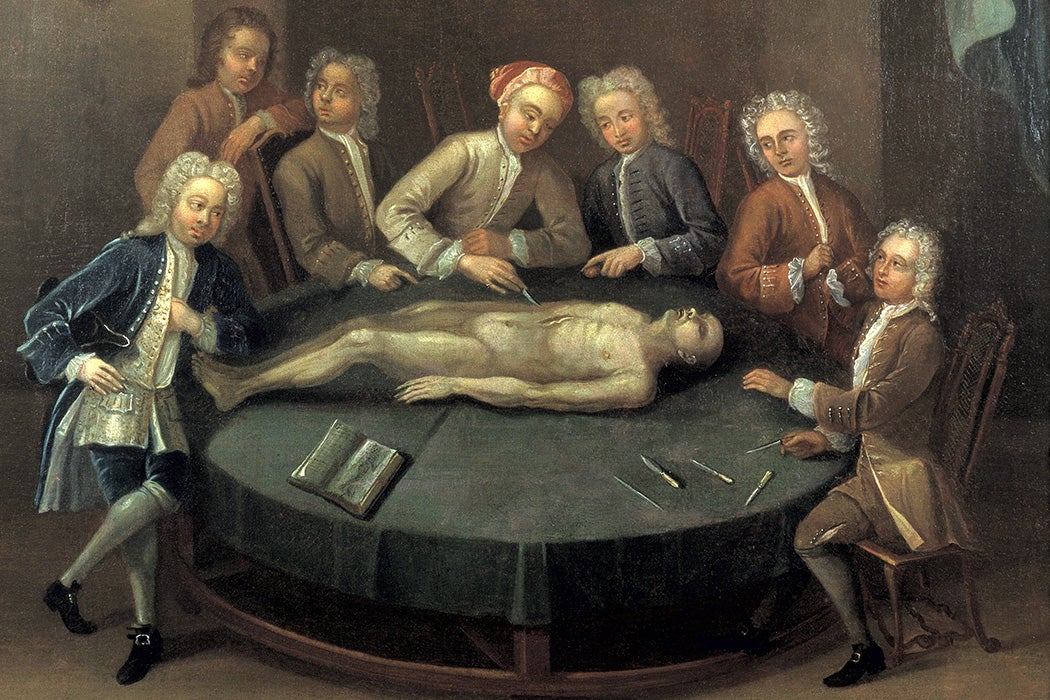From antiquity to today’s medical schools, dissection of cadavers has been one of the key ways doctors and scientists have learned about the human body. But it’s also often been a controversial practice. As scholar of medical history Tatjana Buklijas explains, for much of the nineteenth century, no place offered easier access to corpses than Vienna.
In medieval and early modern Europe, Buklijas writes, medical researchers dissected the bodies of executed criminals. Around 1800, as scientific interest in anatomy broadened, various nations began shifting to give anatomists access to the corpses of the poor. For example, the British government was troubled by scientifically motivated grave robbery, which sometimes targeted the graves of the middle and upper classes. So it passed the 1832 Anatomy Act, allowing the dissection of those who died in workhouses. Meanwhile, American medical students stole the bodies of recently deceased African-Americans.
But by the mid-nineteenth century, Buklijas writes, Vienna “became an essential stop on the educational tours of foreign, largely American and German, students,” for the opportunity it offered to practice dissection.
Why Vienna? Buklijas points first to diverging in attitudes toward death in North and South Europe. Other historians have argued that southern Europeans traditionally saw a death as a sudden, complete separation of body and soul. Northerners, on the other hand, believed the process was more gradual, making dissection dicier. Vienna sat on the North-South border, but through the end of the eighteenth century, it served as the capital city of the Hapsburg Empire, which had adopted Italian-style Roman Catholicism. The Hapsburgs followed the papal custom of having their own bodies embalmed, with their hearts, intestines, and the remainder of their bodies buried at different churches. In Vienna, unlike in many other places, dissected corpses were buried with respectful religious ritual.
The city’s medical establishment was also centralized. The General Hospital, founded in 1784, was the largest in Europe. It worked closely with the University of Vienna, allowing faculty to examine patients in life and use their bodies after their death “as a fair repayment for the free medical care they had received in the hospital,” Buklijas writes.
Weekly Newsletter
Karl Rokitansky, who was the hospital’s chief pathologist and a well-known anatomy professor in the mid- to late nineteenth century, had an extraordinary level of power over the entire process of obtaining corpses. Buklijas finds that he not only controlled the use of unclaimed cadavers from hospitals but “enjoyed the secret privilege of claiming any body buried in Vienna.” In an 1867 letter, Rokitansky explained that, at his request, the chief municipal public health official would tell the gravedigger to only bury a body shallowly. Later, he would send someone to dig it up. “There was no danger of protests from the families of the deceased because the gravediggers were bound by an oath of silence,” Buklijas writes.
Evidently, that sneaky collusion to steal corpses helped provide an education for a generation of international medical students.







